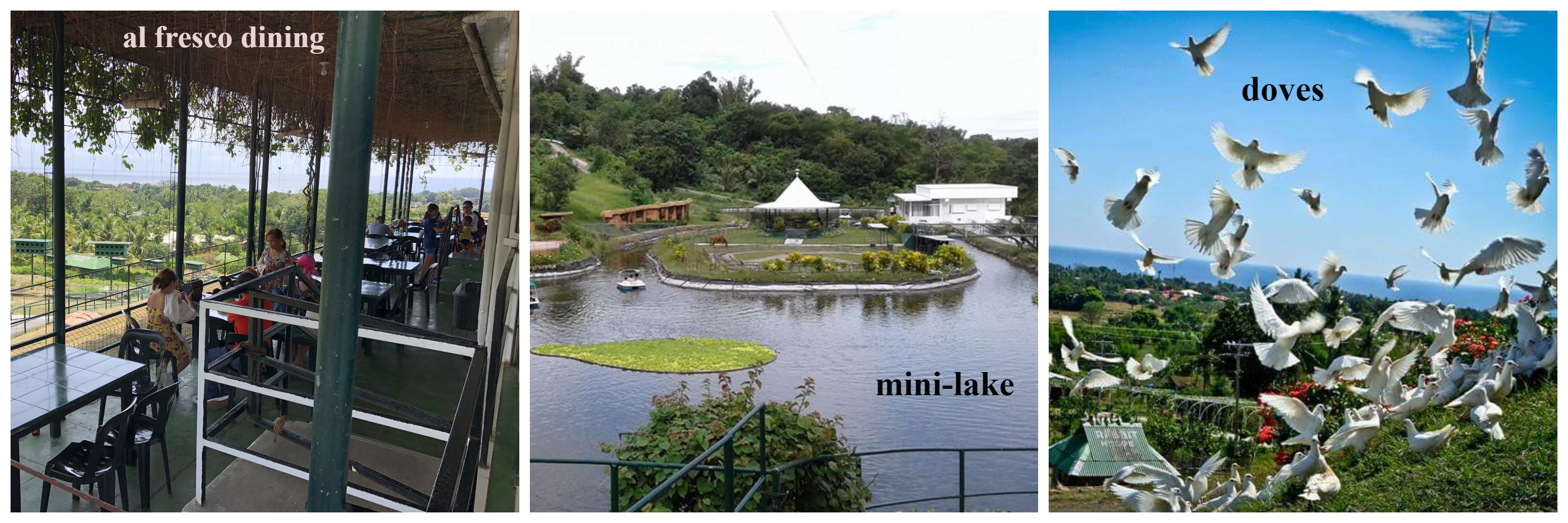Dear foreign readers, allow Tita S to tell you 11 facts about a famous festival in the Philippines.
1.The Dinagyang Festival is an annual 3-day religious and cultural festival held on the 4th Sunday of January, or right after the Sinulog Festival1 in Cebu City2, and the Ati-Atihan Festival3 in the municipality4 of Kalibo5, in the province6 of Aklan7.
2. It is held in Iloilo City8, the capital city of the province6 of Iloilo9 and a 1st class10 highly urbanized city11 in the Western Visayas12 region13 of the Philippines.
3. This festival showcases the rich heritage, colorful history, religious devotion and fun-loving spirit of the local people called Ilonggos.
It is held to show reverence to, and as a thanksgiving celebration in honor of, the Santo Niño (the Holy Child Jesus). It also marks the arrival of the Malay immigrants, as told in the Legend of Maragtas14.
4. This festival was voted as the Best Tourism Event three times in a row (2006, 2007 and 2008) among any other festival in the Philippines by the Association of Tourism Officers in the Philippines.
It is also the most awarded festival in the Philippines because of its legacy, popularity, and innovation.
It is one of the few festivals in the world to get the support of the United Nations for the promotion of the Millennium Development Goals, and was cited by the Asian Development Bank (ADB) as Best Practice on government, private sector and non-government organization (NGO) cooperatives.
It has received other honors and awards as a world class festival so it is dubbed as the “Queen of All Festivals in the Philippines”.
5. In November 1967, Rev. Fr. Ambrosio Galindez, the first Filipino rector of the Agustinian Community and Parish Priest of the San Jose Parish introduced the devotion to Santo Niño after observing the Ati-Atihan Festival3 in the province6 of Aklan7, also in the Western Visayas12 region13 of the Philippines.
A replica of the original image of the Santo Niño de Cebu was brought to Iloilo8 in 1968 by Fr. Sulpicio Enderez of Cebu as a gift to the Parish of San Jose. Members of the Confradia del Santo Niño15, Iloilo Chapter, led the faithful in welcoming the image at the Iloilo Airport, and paraded it down the streets of Iloilo City.
6. The said Confradia chapter started the observance of the festival patterned after the celebration of the Ati-Atihan3 of the municipality4 of Ibajay, in the province6 of Aklan7. The festival was only confined to the parish grounds. Natives covered their bodies with soot and ashes and danced in the streets, to simulate the Atis16 dancing to celebrate the sale of Panay17. These tribal groups were the prototype of the present festival.
Eventually, more and more groups participated, so the celebrations became more lively and elegant with each passing year.
7. In 1977, President Ferdinand Marcos ordered various regions13 of the Philippines to come up with festivals or celebrations that could boost tourism and development. The people of Iloilo City8 easily identified the Iloilo Ati-Atihan as its festival, to differentiate it from the original Ati-Atihan Festival3 of Kalibo5, Aklan7.
8. In 1977, Iloilo City8 officially named their festival Dinagyang, an Ilonggo word that means “to celebrate and have fun” and encourages revelry and merriment to capture the spirit of the Ilonggos. Henceforth, the Iloilo Ati-Atihan came to be known as Dinagyang.
9. This festival has the following major events:
* Religious Fluvial and Solemn Foot Procession (held on a Friday, with images of the Santo Niño carried on boats that sail along the Iloilo River, from Fort San Pedro to Muelle Loney Street, then carried by the townsfolk in a solemn foot procession passing by the Provincial Capitol, and ending at the San Jose Parish Church);
* Dagyang sa Calle Real (held on a Saturday prior to the main event the next day) – It is a religious street dancing activity called sadsad where everyone is welcome to join the energetic dances of the performers;
* Ati Tribe Competition (the main event, held on a Sunday) –
This consists of a number of “warrior” dancers in a tribe (locally called tribu) dancing in choreographed formations and patterns as well as chanting to the sound of loud drum beats and improvised percussion instruments innovated by participating tribes.

Dinagyang 2020 – Photo source: https://www.facebook.com/DepartmentOfTourism/photos/3330057480354434
Performers must paint their skin black.

Photo source: https://www.facebook.com/dinagyangfestival.iloilo/photos/10151418986338883
Indigenous and other kinds of materials can be used for the colorful costumes.

Photo source: https://www.facebook.com/DepartmentOfTourism/photos/3330057683687747

Photo source: https://www.facebook.com/dinagyangfestival.iloilo/photos/10155141303598883
All dances are performed to drum music.
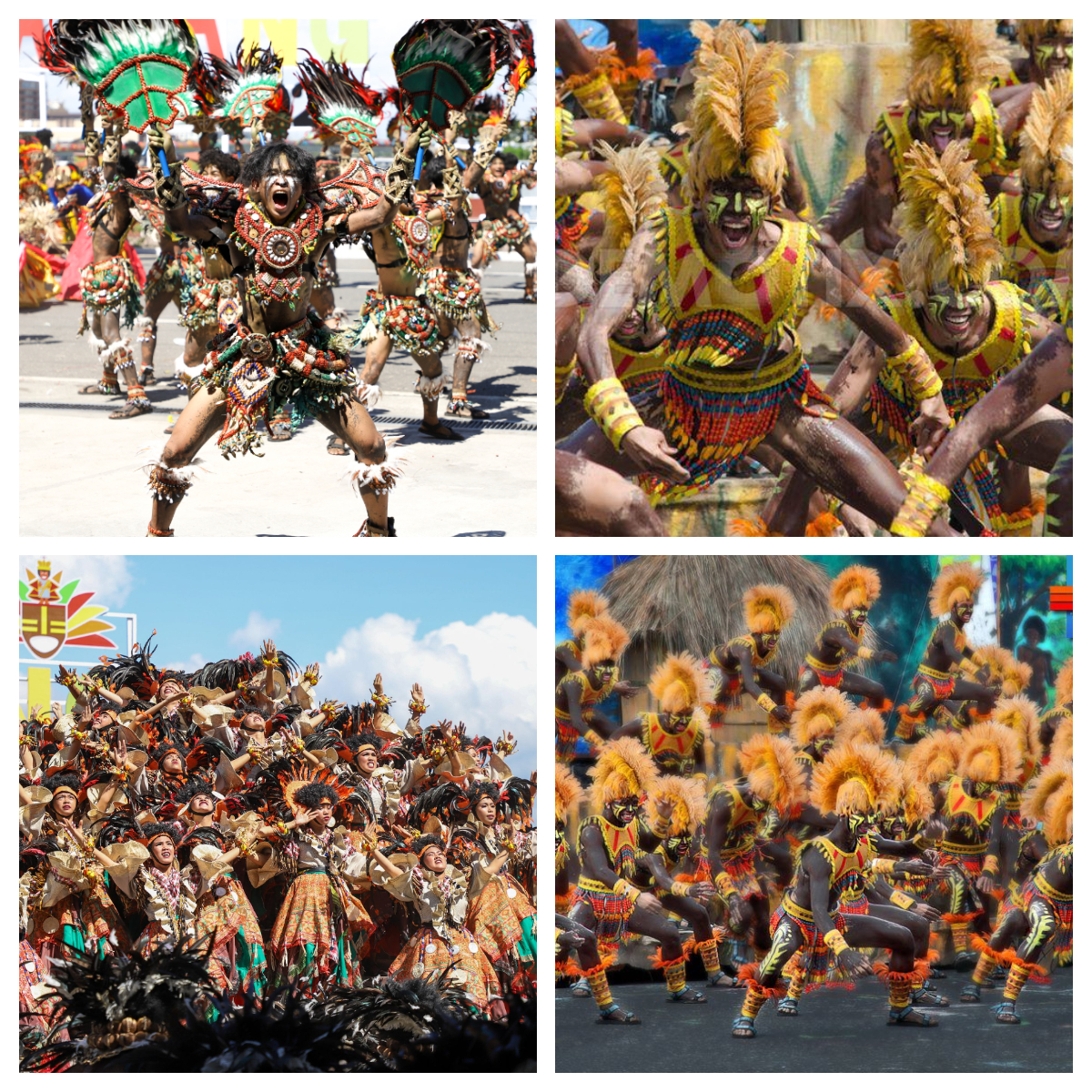
Sources of photos (top-bottom, l-r): https://www.facebook.com/DepartmentOfTourism/photos/3330056710354511, https://www.facebook.com/dinagyangfestival.iloilo/photos/10151388443483883, https://www.facebook.com/DepartmentOfTourism/photos/3330053957021453 and https://www.facebook.com/dinagyangfestival.iloilo/photos/10151417987978883
At first, the tribes were created and organized by barangays24 or communities within and around Iloilo City8. Eventually, high schools created their own tribes with new dancing patterns, formations, and choreography, soliciting sponsorship from private companies. In recent times, some tribes came from as far as the archipelagic province6 of Batanes (in the Cagayan Valley region13 of the Luzon group of islands in northern part of the country) and the landlocked province of Cotabato (in the Soccsksargen region in the Mindanao group of islands in the southern part of the country).
Tribes depict the way of life of the Atis16 who used bows, arrows, spears, and shields.
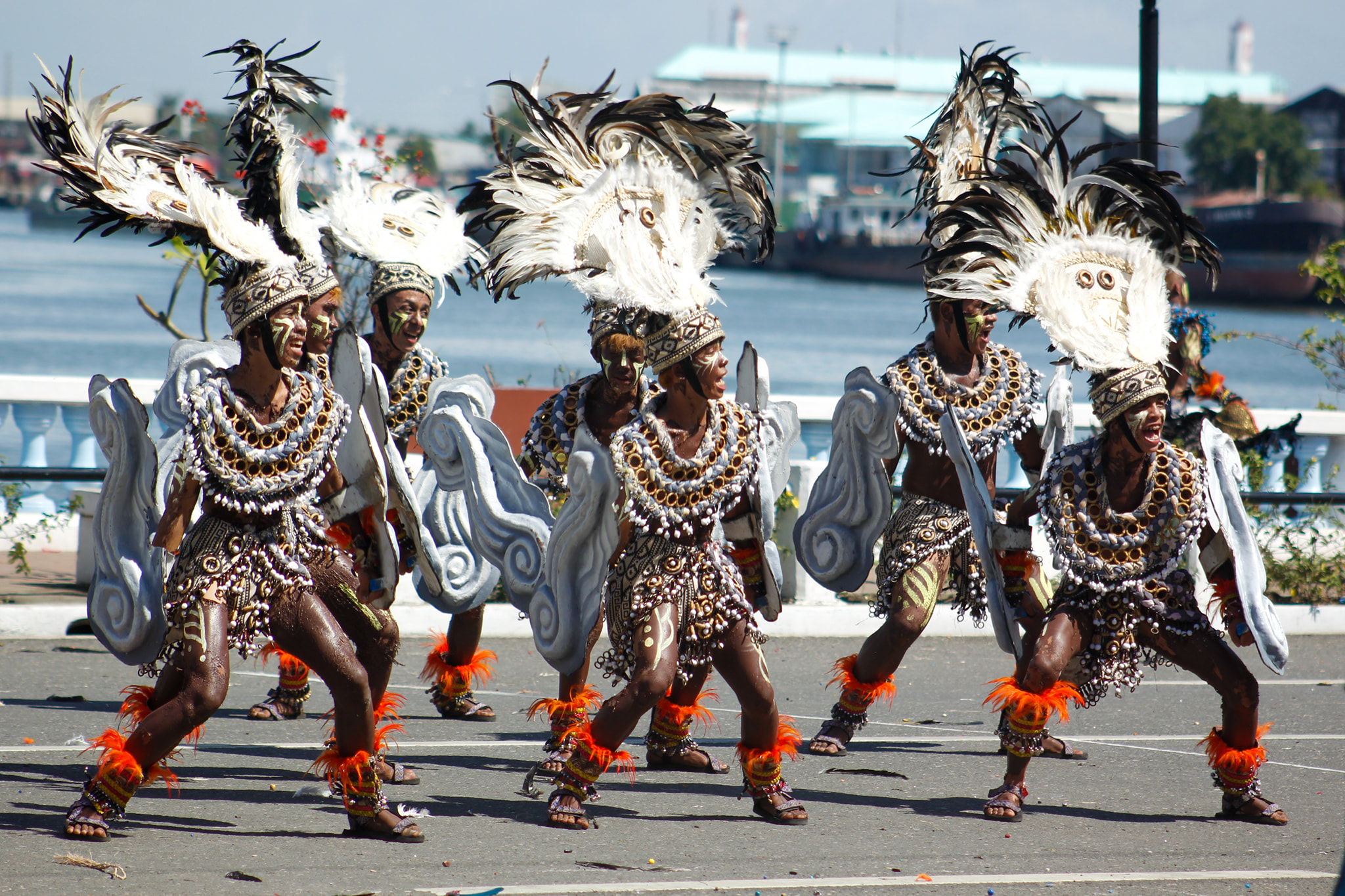
Photo source: https://www.facebook.com/DepartmentOfTourism/photos/3330047190355463
This original ethnic group gave importance to nature, spirits, and animals which they believe were possessed by the omnipresent spirit that governs their environment. Courtship dances, chanting, and the use of huge ornamental articles, hunting, harvest offering, etc. are some of the aboriginal traits and characters that the tribes can utilize in their concepts.
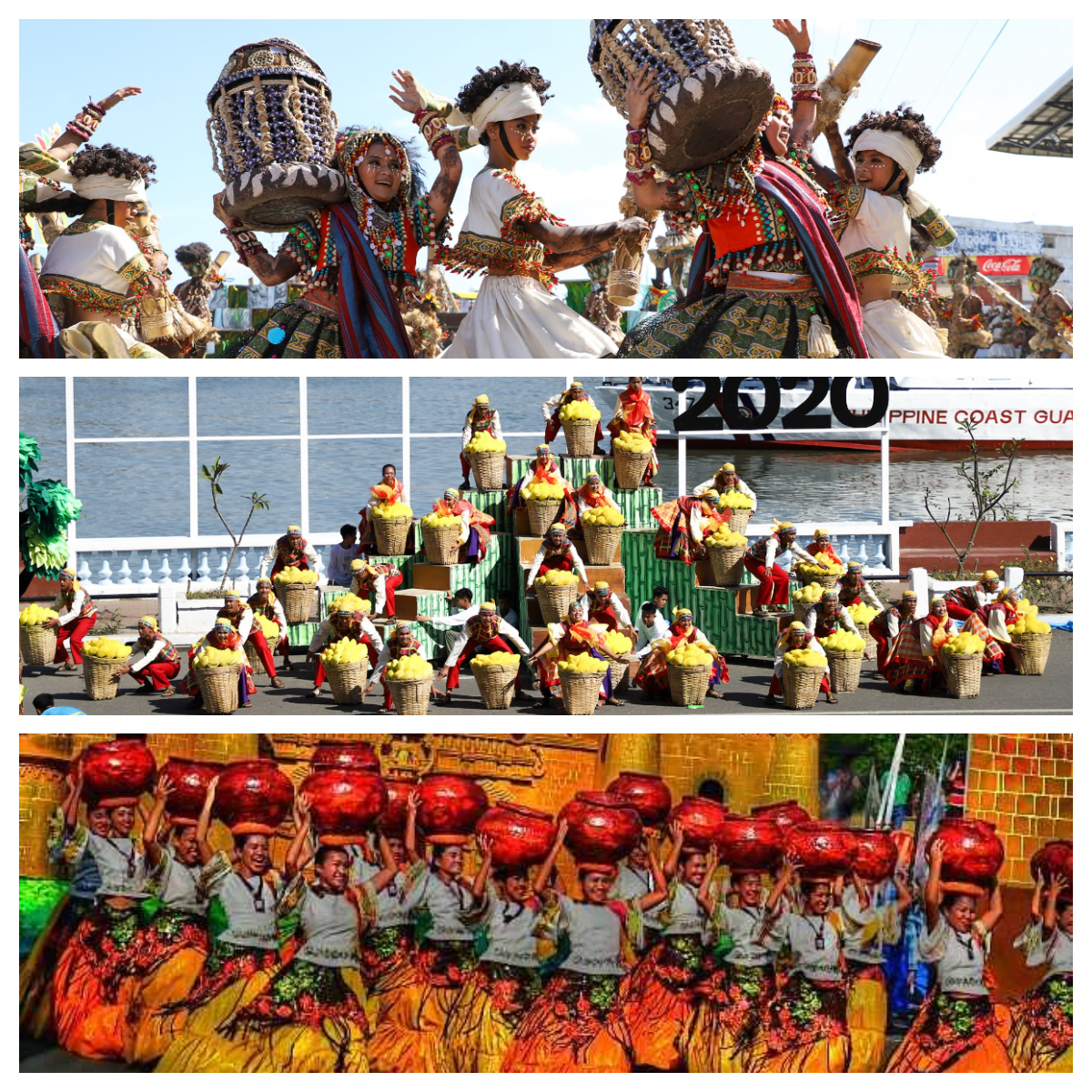
Sources of photos (top-bottom): https://www.facebook.com/DepartmentOfTourism/photos/3330058030354379, https://www.facebook.com/DepartmentOfTourism/photos/3330060077020841 and https://www.facebook.com/dinagyangfestival.iloilo/photos/10152646406698883
There are rules and regulations for this competition, and this includes reverence to the Santo Niño.
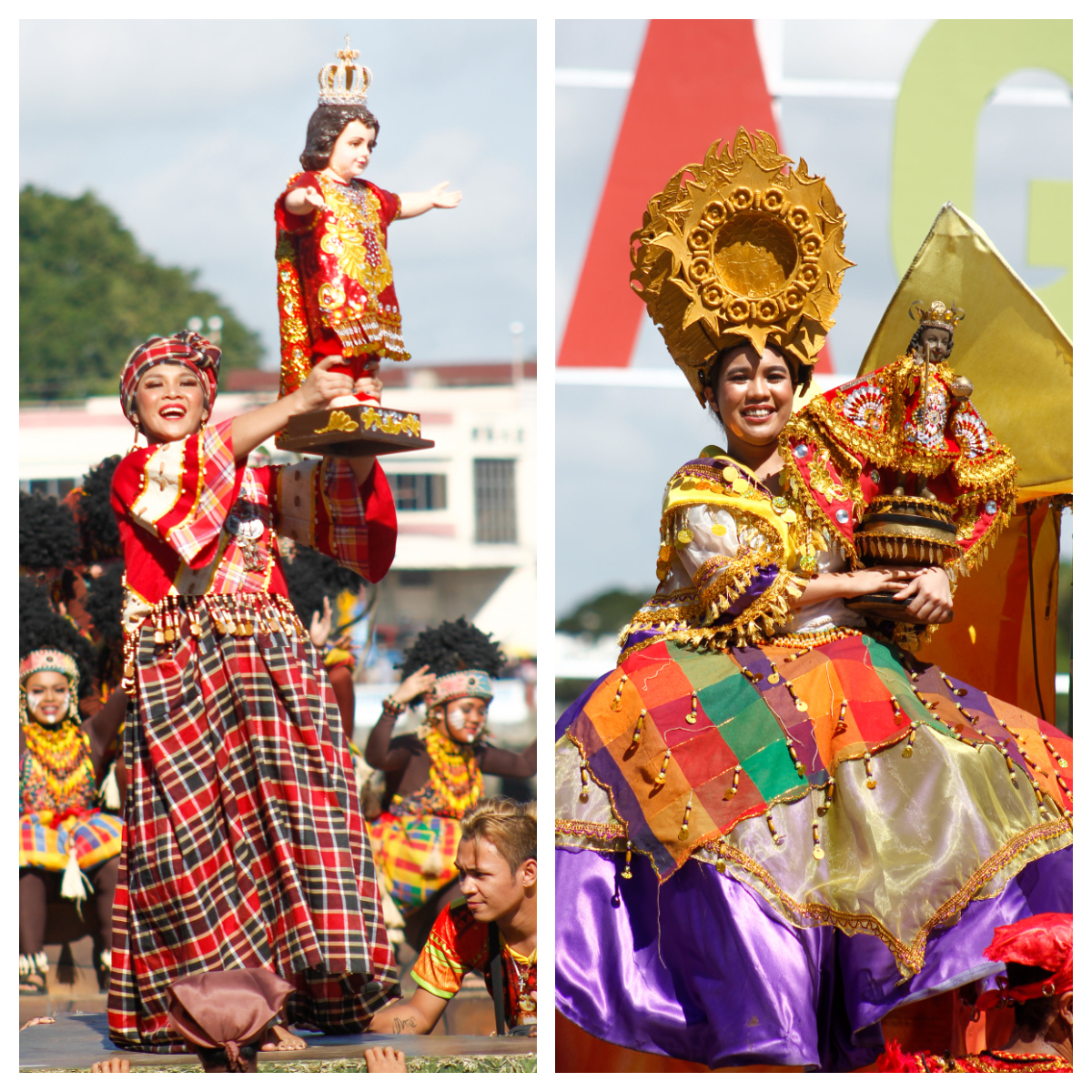
Sources of photos (l-r): https://www.facebook.com/DepartmentOfTourism/photos/3330044013689114 and https://www.facebook.com/DepartmentOfTourism/photos/3330043377022511
The tribes receive a subsidiary from the Dinagyang Foundation Inc. and the city government of Iloilo. They also recruit private sponsors, with the best tribes receiving the most.
| * The Kasadyahan Cultural Competition was added to the Dinadyang Festival from the 1980s to 2019. It is a dramatization of the life of the Atis16 as recounted in the Legend of Maragtas14. This competition showcases the talents of the students as well as the rich cultural heritage of the province6 of Iloilo9. Initially, only students within the province of Iloilo participated, but eventually, students from the Western Visayas12 region13 also took part in the event. Among other criteria, participants are judged on their level of dramatization (along with the color and beauty of the dancers’ costumes made of native materials), and dance skills to the accompaniment of drums. |
* The annual search for Miss Iloilo Dinagyang is held on the week of the main Dinagyang Festival highlights.

Photo source: https://www.facebook.com/dinagyangfestival.iloilo/photos/10151415679103883
10. But you know what? The current Ati16 population of Iloilo is not involved with any of the tribes nor is it involved in this festival, and does not benefit in any way. However, the original Atis from the hinterlands of Panay17, specifically those from the mountains of Barotac Nuevo and Anilao, have non-competitively participated in recent years, thereby gaining recognition and receiving importance as being the characters symbolically portrayed in the festival.
11. Would you believe that this festival has an official mascot? Yes! Dagoy is Dinagyang Festival’s official mascot and the first festival mascot in the Philippines. He is a young Ati16 warrior who stands 6 ft. and 9 in. tall, has a dark brown skin tone, and wears a headdress with an image of Santo Niño. He wears the camel-colored loincloth of a typical Ati. His hands and feet are adorned with multi-colored bracelets, like a warrior. He holds a drum made of fiberglass with the logo of the Iloilo City8 government at the center. He symbolizes the merrymaking of the Ilonggo people and a symbol of friendship between the Ilonggos and the tourists visiting Iloilo City to witness the Dinagyang Festival.
He was born from the promotional sketches of Dinagyang in 2002 and the caricature was later adopted as the official logo of the festival. Dagoy was introduced to the public on December 14,2004 in the Fort, Taguig, and December 18,2004 in Iloilo City8.
Dagoy is so popular among children that miniature versions called Dagoy dolls are sold.
The information was obtained from https://www.exploreiloilo.com/do/info/dinagyang-festival/, https://www.filipinopod101.com/lesson/culture-class-holidays-in-the-philippines-12-dinagyang-festival/, https://www.facebook.com/dinagyangfestival.iloilo/posts/the-essence-of-dinagyang-festival-as-a-cultural-festival-is-the-portrayal-and-de/10150506881523883/, https://expertworldtravel.com/philippines/dinagyang-festival/, https://philnews.ph/2019/11/20/summary-of-maragtas-the-legend-of-the-ten-bornean-datus/, http://www.iloilo.gov.ph/history and the Wikipedia page “Dinagyang”18.
I have not seen this festival and it is definitely in my travel bucket list. Heads up: Vehicles are not allowed to enter the parade route and nearby streets so we have to walk within Iloilo City8 proper during the festivities, and wear comfortable clothes and footwear. Hala bira, Iloilo!
I definitely have to block January to see 3 festivals: the Sinulog Festival1 in Cebu City2, the Ati-Atihan Festival3 in Kalibo5, Aklan6, and this festival!
This is not a sponsored post. I just want my readers to know more about the Philippines.
The photos featured in the cover photo-collage (top-bottom, l-r) were obtained from: https://www.facebook.com/DepartmentOfTourism/photos/3330044013689114, https://www.facebook.com/DepartmentOfTourism/photos/3330047190355463, https://www.facebook.com/DepartmentOfTourism/photos/3330060077020841 and https://www.facebook.com/dinagyangfestival.iloilo/photos/10151418986338883.
Did you find this post informative? I would like to hear your comment/s regarding Dinagyang Festival, especially if you were able to see it.
See other interesting places through other posts in this category and other categories of SCapades, Pinoy Delights, and Smart Travelers – Foreign Travelers Ask, Now You Know, and Say, Say, Say. Happy reading, and I hope that you will appreciate what I shared and some of the featured destinations will be part of your future travel plans!
Remember to share this post with your Facebook friends, follow me by clicking on the bottom right corner of your device, and do not forget to like this post. Thank you.
– – – – – – – – – – – – – – – – – – – – – – – – – –
The following terms are defined for interested readers, especially those with “Senior-Moments”, those not familiar with Filipino terms, and those too busy or lazy to Google such terms:
1The Sinulog-Santo Niño Festival is an annual cultural and religious festival honoring the child Jesus, the Santo Niño, held on the 3rd Sunday of January in Cebu City2, and on the 4th Sunday of January in the municipality4 of Carmen, in the province6 of Cebu. It is the center of the Santo Niño (the Holy Child Jesus) Catholic celebrations in the Philippines, attracting lots of tourists worldwide, and is dubbed as Cebu’s grandest festival.
Its grand parade showcases a dance ritual that commemorates the Cebuano people’s pagan origin and their acceptance of Roman Catholicism. The information was obtained from https://www.beyondcebu.com/cebu/festivals/the-sinulog-festival and the Wikipedia page “Sinulog”19.
2Cebu City is a first class10 highly urbanized city11 in the Central Visayas region13 of the Philippines. It is the regional center and primate city of the said region, and seat of government of the province6 of Cebu, but governed independently.
It is the country’s oldest city and the first capital of the Philippines. It was the first Spanish settlement so this city is considered the birthplace of Christianity in the Far East. It became a city on April 27,1594 through a Real provision of King Philip II of Spain, preceding all other Philippine cities, except Manila.
It is the capital city of the island province of Cebu. It is dubbed as the Queen City of the South due to its commercial potential and its beautiful attractions. It is also recognized by the British Council as the Creative Capital of the Philippines. In 2019, it joined the UNESCO Creative Cities Network as a City of Design.
The information was obtained from https://skyticket.com/guide/3620 and the Wikipedia page “Cebu City”20.
3The Ati-Atihan Festival is a Philippine festival held annually in January in honor of the Santo Niño (Holy Infant Jesus) in several municipalities4 of the province6 of Aklan7, Panay Island17. The biggest celebration is held during the 3rd Sunday of January in the municipality of Kalibo5, the province’s capital.
The name Ati-Atihan means “to imitate Ati16”, the local name of the Aeta21 people, the first settlers of Panay Island17 and other parts of the archipelago.
This festival consists of religious processions and street-parades, showcasing themed floats, dancing groups wearing colorful costumes, marching bands, and people sporting face and body paints. The street parade is called sadsad, which is also what the locals call their way of dancing, where the foot is momentarily dragged along the ground in tune to the beat played by the marching bands.
This festivity was originally a pagan celebration but was eventually given a different meaning by the church by celebrating the acceptance of Christianity, as symbolized by carrying an image of the Holy Infant Jesus during the procession.
The information was obtained from the Wikipedia page “Ati-Atihan Festival”22.
4A municipality is a small, single urban administrative division, or local government unit (LGU)23, in the Philippines which has corporate status and powers of self-government or jurisdiction as granted by law. It is a unit under a province6, subdivided into barangays24, and is called town, or bayan. In the Philippines, a municipality is headed by a mayor, a vice mayor and members of the Sangguniang Bayan (legislative branch). The information was obtained from Wikipedia page “Municipalities of the Philippines.”25
5Kalibo is a a first class10 municipality4 and capital of the province6 of Aklan7 in the Western Visayas12 region13 of the Philippines. It has 16 barangays24. It is located in the northwest of Panay17 and is the main transportation hub for the popular resort island of Boracay. Aklanon is the main language of the local residents.
The term Kalibo comes from the Aklanon word sangka libo (“one thousand”), reputedly the number of native Ati16 who attended the first Catholic Mass celebrated there.
This municipality is known for:
* the Ati-Atihan Festival3 held every 3rd Sunday of January;
* the Bakhawan Eco-Park, the semi-urban and multi-awarded mangrove forest;
* piña-weaving, nominated by the Aklan government and the National Commission for Culture and Arts to the UNESCO Intangible Cultural Heritage Lists.
The information was obtained from Wikipedia page “Kalibo.”26
6A province is the primary administrative and political division in the Philippines. It is the second-level administrative sub-division of a region13. There are 81 provinces (called lalawigan) in the Philippines. Each province is governed by an elected legislature called the Sangguniang Panlalawigan and by an elected governor. The information was obtained from Wikipedia page “Provinces of the Philippines.”27
See a related post: Foreign Seniors Ask: WHAT ARE PROVINCES IN THE PHILIPPINES?
7Aklan is a province6 in the Western Visayas12 region13 of the Philippines which occupies the northern third of the Panay Isand17 in the northwestern portion, facing the Sibuyan Sea and the province of Romblon to the north, and bordering Antique to the southwest and Capiz to the east. It has 17 municipalities4 and its capital is Kalibo5.
It is called the oldest province in the Philippines because it was organized in 1213 by settlers from Borneo, along with the province of Capiz. It was inaugurated as an independent province on November 8, 1956.
Aklan is famous for Boracay, a resort island 1 km (0.62 mi) north from the tip of Panay.
The information was obtained from https://ph.news.yahoo.com/aklan-philippines-oldest-province-061046849.html and the Wikipedia page “Aklan.”28
8Iloilo City is a highly urbanized city11 on the southeastern tip of Panay Island17 in the Philippines. It was founded in 1566, recognized as a city in 1889, and as a highly urbanized city in 1979. It is the capital of the province6 of Iloilo where it is geographically situated but, in terms of government and administration, it is politically independent. It is the regional capital of the Western Visayas12 Region13 and the regional hub of education, healthcare, tourism, culture, industry and economy. It is also the regional center of government offices, financial institutions and government-owned and controlled corporations. It has 180 barangays24. The information was obtained from the Wikipedia page “Iloilo City”.29 You may visit its website: www.iloilocity.gov.ph
9Iloilo is a province6 located in the Western Visayas12 Region13 of the Philippines, founded in 1566. It occupies the central and eastern sections of Panay Island17, bordered by the province of Antique to the west, Capiz to the north, the Jintotolo Channel to the northeast, the Guimaras Strait to the east, and the Iloilo Strait and Panay Gulf to the southwest. Its capital is Iloilo City8. It consists of 42 municipalities4 and two cities (Iloilo City and Passi City). The information was obtained from the Wikipedia page “Iloilo”.30 You may visit its website: www.iloilo.gov.ph
10A first class city in the Philippines is a city with an average annual income of at least PHP500,000, based on the previous four calendar years, according to the Wikipedia page “Cities of the Philippines”.31
11A highly urbanized city (HUC) is a city with a minimum population of 200,000 inhabitants, as certified by the Philippine Statistics Authority, and with the latest annual income of at least PHP50 million or US$1 million, as certified by the City Treasurer. The information was obtained from Wikipedia page “Cities of the Philippines”.31
There are currently 33 such cities in the Philippines; see a related post: Foreign Seniors Ask: HOW MANY CITIES ARE THERE IN THE PHILIPPINES?
12Western Visayas is an administrative region13 in the Philippines, also known as Region VI, with a land area of 20,794.18 sq.km. (8,028.68 sq.mi.). It consists of 6 provinces6 (Aklan7, Antique, Capiz, Guimaras, Iloilo9 and Negros Occidental), 2 highly urbanized cities11 (Bacolod City and Iloilo City8), 14 component cities32, 117 municipalities4, and 4,051 barangays24. It is considered the most populous region in the Visayas group of islands in the central part of the Philippine archipelago. The information was obtained from the Wikipedia page “Western Visayas”.33
13A region is an administrative division based on geographical, cultural and ethnological characteristics. Each region is further subdivided in provinces6, composed of cities and municipalities4 (or towns), which in turn, are divided into barangays24, formerly called barrios, according to Wikipedia page “Regions of the Philippines” 34.
See a related post: Foreign Seniors Ask: WHAT ARE THE REGIONS OF THE PHILIPPINES?
14The Legend of Maragtas recounts ten35 chieftains, called datus, who escaped the tyranny of Sultan Makatunaw of the island of Borneo, sometime in the 12th/13th century when Indonesia and the Philippines were under the rule of Indianized native kingdoms.
Datus Puti and Sumakwel led 8 other datus and their wives, and sailed in boats called balangays. They ventured into the night across the ocean and landed at the mouth of the Suaragan River on the southwest coast of Panay called Aninipay, now known as the municipality4 of San Joaquin of the province6 of Iloilo9.36
This place was ruled by Ati16 headman named Polpolan and his son, King Marikudo and wife, Queen Maniwangtiwang, and inhabited by the tribe called Aetas37. The king was initially terrified of the datus but one of them, Datu Puti, assured him that they had peaceful intentions. The datus eventually befriended the tribe and wanted to settle there so they bartered the lowlands of Panay for a golden salakot (hat) and a manangyad (long gold necklace), and other assorted gifts. Both parties agreed, the datus took complete control of the area, and the Aetas went to the mountains. They are the ancestors of the Bisaya, and led to the birth of the precolonial Philippine culture and population. The Borneans and Aetas lived in peace, harmony and prosperity. The Spaniards came and established the provincial government in 1565.36
15The Confradia del Santo Niño is a Roman Catholic voluntary association of lay people who are devoted to the Santo Niño (the Holy Child Jesus). This national body organized the devotees through local chapters, like in Iloilo City8. It promotes and propagates the devotion to the Santo Niño throughout the Philippines, as well as mutual assistance and cooperation among members. It sanctifies its members and their families through the devotion to Santo Niño, active practice of their faith, frequent reception of the Holy Eucharist and Communion, including Communion, charitable works and social apostolate.37
16Ati is a Negrito38 ethnic group in the Visayas, Philippines, principally concentrated in the islands of Boracay, Negros and Panay17. Ati is also known by different names – Aeta, Agta, Atta, Ayta and Ita. These names are usually based on their geographical location, history, or relationship with other people, and are spread over the islands of Luzon (northern part), Visayas (central part) and Mindanao (southern part) of the Philippine archipelago.
Atis are genetically related to other Negrito38 ethnic groups in the Philippines such as the Aeta of Luzon, the Batak of Palawan, the Agta of the Sierra Madres, and the Mamanwa of Mindanao.
They are known to be among the earliest known migrants or inhabitants of the Philippines. They inhabited the remote and mountainous regions of Luzon (islands in the northern part of the Philippines) between 20,000 to 30,000 years ago, way before the Austronesian migrations of the Malays and Asian groups.
Atis have dark to dark-brown skin, curly hair, and are usually below 5 ft tall. They are hunting and gathering indigenous people. They are nomadic and build temporary houses made of sticks.
Over the years, the majority of their population managed to keep their cultural practices and traditions, and still face challenges such as displacement, marginalization and poverty.
The information was obtained from https://travelnoire.com/aeta-african-natives-philippines, https://theculturetrip.com/asia/philippines/articles/the-aeta-the-first-philippine-people/ and the Wikipedia page “History of the Philippines (1565-1898)39 and “Ati people”41.
17Panay Island is the 6th largest, and 4th most populous, island in the Philippines, located in the Western Visayas12 Region13 of the Philippines, with a total land area of 12,011 sq.km. (4,637 sq.mi.). This triangular island is located in the western part of the Visayas and consists of 4 provinces: Aklan7, Antique, Capiz and Iloilo9. The information was obtained from the Wikipedia page “Panay Island”.42
18“Dinagyang,” accessed August 5, 2021, https://en.wikipedia.org/wiki/Dinagyang
19“Sinulog,” accessed August 5, 2021, https://en.wikipedia.org/wiki/Sinulog
20“Cebu City,” accessed August 5, 2021, https://en.wikipedia.org/wiki/Cebu_City
21The Aeta (Aita, Alta, Arta, Atta, Ayta, Ita) Agta, or Dumagat, is a collective term for several Filipino indigenous peoples who live in various parts of Luzon, the island groups in the northern part of the Philippine archipelago. They are considered to be part of the Negrito38 ethnic groups and share common physical characteristics of dark skin tones, short statures, curly to Afro-textured hair, and a higher frequency of naturally lighter hair color relative to the general population. They are thought to be among the earliest inhabitants of the Philippines, preceding the Austronesian migrations.
They were historically nomadic hunter-gatherers, composed of 1 to 5 families per mobile group. They are usually divided into 3 main groups: the Aeta from Central Luzon, the Agta of Southeastern Luzon, and the Dumagat (or Dumaget) of Eastern Luzon. These divisions are actually arbitrary and the 3 names can be used interchangeably. They are also commonly confused with the Ati16 people of the Visayas group of islands at the central part of the country.
The information was obtained from the Wikipedia page “Aeta people”.43
22“Ati-Atihan festival,” accessed August 5, 2021, https://en.wikipedia.org/wiki/Ati-Atihan_festival
23A local government unit (LGU) in the Philippines is divided into 3 levels: provinces6 and independent cities44; component cities32 and municipalities4; and, barangays24, according to Wikipedia page “Local government in the Philippines”.45
24A barangay is the smallest administrative division in the Philippines. It is headed by a barangay captain, aided by a Sangguniang Barangay (Barangay Council). It is the native Filipino term for a village. It was formerly called a barrio. In a metropolitan area, a barangay is an inner-city neighborhood, a suburb, or a suburban neighborhood. The word barangay originated from the term “balangay”, a kind of boat used by a group of Austronesian people who migrated to the Philippines. A number of barangays grouped together is called a district. The information was obtained from Wikipedia page “Barangay.”46
25“Municipalities of the Philippines” accessed April 2, 2018, https://en.wikipedia.org/wiki/Municipalities_of_the_Philippines
26“Kalibo,” accessed April 2, 2018, https://en.wikipedia.org/wiki/Kalibo
27“Provinces of the Philippines,” accessed April 2, 2018, https://en.wikipedia.org/wiki/Provinces_of_the_Philippines
28“Aklan,” accessed August 5, 2021, https://en.wikipedia.org/wiki/Aklan
29“Iloilo City,” accessed January 17, 2020, https://en.wikipedia.org/wiki/Iloilo_City
30“Iloilo,” accessed January 17, 2020, https://en.wikipedia.org/wiki/Iloilo
31“Cities of the Philippines,” accessed April 2, 2018, https://en.wikipedia.org/wiki/Cities_of_the_Philippines
32A component city is a type of city in the Philippines which does not meet the requirements of a highly urbanized city11 and is under the jurisdiction of a province6. If such a city is located along the boundaries of 2 or more provinces, it shall be considered part of the province of which it used to be a municipality4. The information was obtained from the Wikipedia page “Cities of the Philippines.”31
See a related post: Foreign Seniors Ask: HOW MANY CITIES ARE THERE IN THE PHILIPPINES?
33“Western Visayas,” accessed January 17, 2020, https://en.wikipedia.org/wiki/Western_Visayas
34“Regions of the Philippines,” accessed April 2, 2018, https://en.wikipedia.org/wiki/Regions_of_the_Philippines
35Here are the names of the 10 datus and their wives (dayangs) if any, in alphabetical order:37
* Datu Balensuela
* Datu Bangkaya and Dayang Katurong
* Datu Domalogdog
* Datu Dumangsil
* Datu Dumangsol
* Datu Libay
* Datu Paduhinogan and Dayang Tibongsapay
* Datu Paiborong and Dayang Pabilaan
* Datu Puti and Dayang Pinangpangan
* Datu Sumakwel and Dayang Kapinangan
36https://philnews.ph/2019/11/20/summary-of-maragtas-the-legend-of-the-ten-bornean-datus/ post
37https://santoninodecebubasilica.org/organizations/cofradia-del-sto-nino/ post
38The Aetas (pronounced “eye-tas”) were called Negritos during the Spanish colonial rule in the Philippines (1565-1898). They are comprised of about 25 different ethnolinguistic groups, widely scattered throughout the Philippine archipelago, mostly as forest dwellers, hunters, and gatherers for thousands of years. They have small statures and frames, and are dark, to very dark brown,-skinned people with curly or kinky afro-textured hair. Although they speak Abellen, Amabala, Mag-antsi, Mag-indi and Mariveleño, they are also known to adopt the language of their neighbors.40
The Negritos were the aboriginal, or first, inhabitants of the Philippine archipelago who arrived from Borneo 20,000-30,000 years ago, through what is thought to be an isthmus (remnants of which today comprise the island of Palawan) that in the prehistoric epoch connected the archipelago to Borneo via a land bridge. According to some oral traditions, they also predate the Bisaya, who now inhabit most of the Visayas.
The information was obtained from the Wikipedia page “Ati people”.41
39“History of the Philippines (1565 – 1898),” accessed August 5, 2021, https://en.wikipedia.org/wiki/History_of_the_Philippines_(1565_-_1898)
40https://travelnoire.com/aeta-african-natives-philippines
41“Ati people,” accessed August 5, 2021, https://en.wikipedia.org/wiki/Ati_people
42“Panay Island,” accessed January 17, 2020, https://en.wikipedia.org/wiki/Panay_Island
43“Aeta people,” accessed August 5, 2021, https://en.wikipedia.org/wiki/Aeta_people
44An independent city in the Philippines is no longer subject to review by any province’s Provincial Board (Sangguniang Panlalawigan), stops sharing its tax revenue with any province6, and is directly supervised by the President of the Philippines. There are currently 38 independent cities in the Philippines.
See a related post: Foreign Seniors Ask: HOW MANY CITIES ARE THERE IN THE PHILIPPINES?
There are 2 kinds of independent cities:
* Highly urbanized city (HUC) – See footnote 11.
* Independent component city (ICC) – This is a city has a charter that explicitly prohibits its residents from voting for provincial officials. There are currently 5 such cities: Cotabato, Dagupan, Naga (Camarines Sur), Ormoc and Santiago.
The information was obtained from Wikipedia page “Cities of the Philippines”.31
45“Local government in the Philippines,” accessed April 2, 2018, https://en.wikipedia.org/wiki/Local_government_in_the_Philippines
46“Barangay,” accessed July 9, 2018, https://en.wikipedia.org/wiki/Barangay

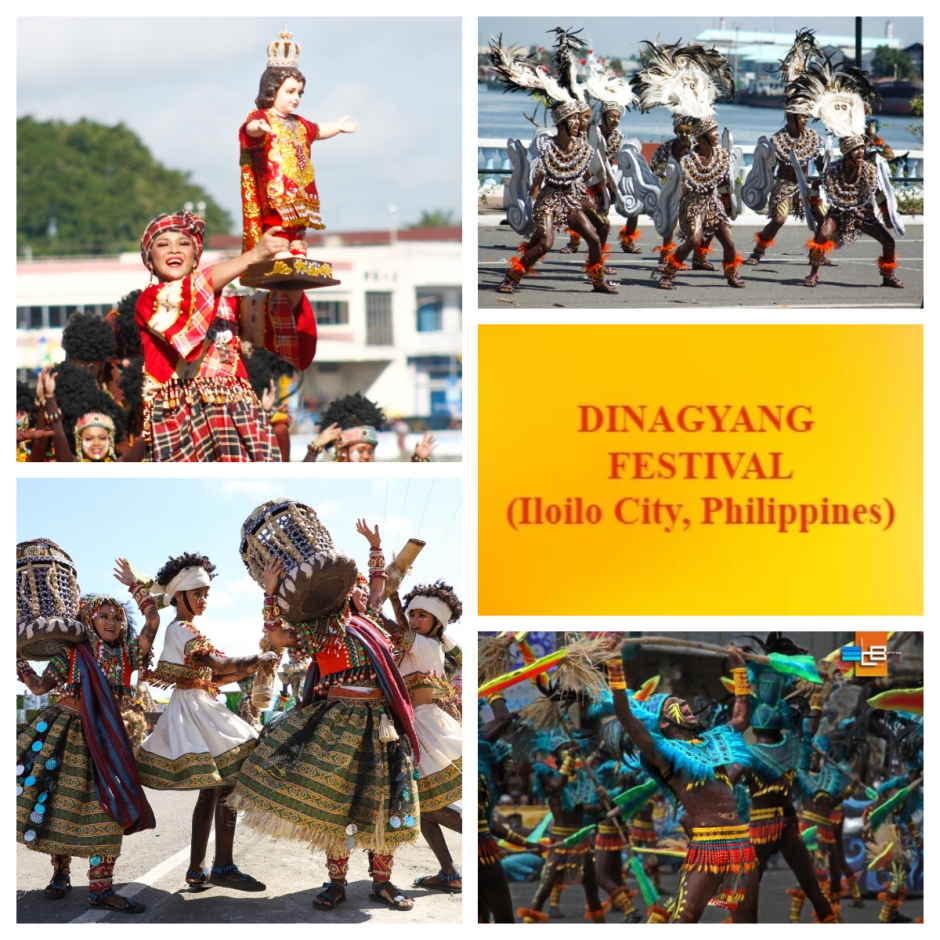
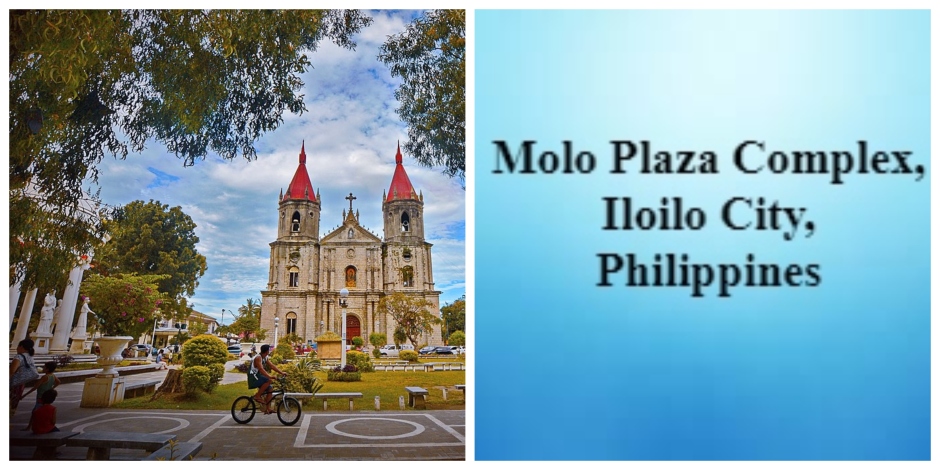
 Part of the Molo Plaza Complex (I also used this in the featured image of this post) – Photo by Allan Jay Quesada, own work, CC BY-SA 4.0, created 4 December 2016,
Part of the Molo Plaza Complex (I also used this in the featured image of this post) – Photo by Allan Jay Quesada, own work, CC BY-SA 4.0, created 4 December 2016,  The Olympian beauties in the gazebo are Aphrodite, Artemis, Athena, Demeter, Hera and Hestia – Information from the Facebook account of the Iloilo City Government:
The Olympian beauties in the gazebo are Aphrodite, Artemis, Athena, Demeter, Hera and Hestia – Information from the Facebook account of the Iloilo City Government: 

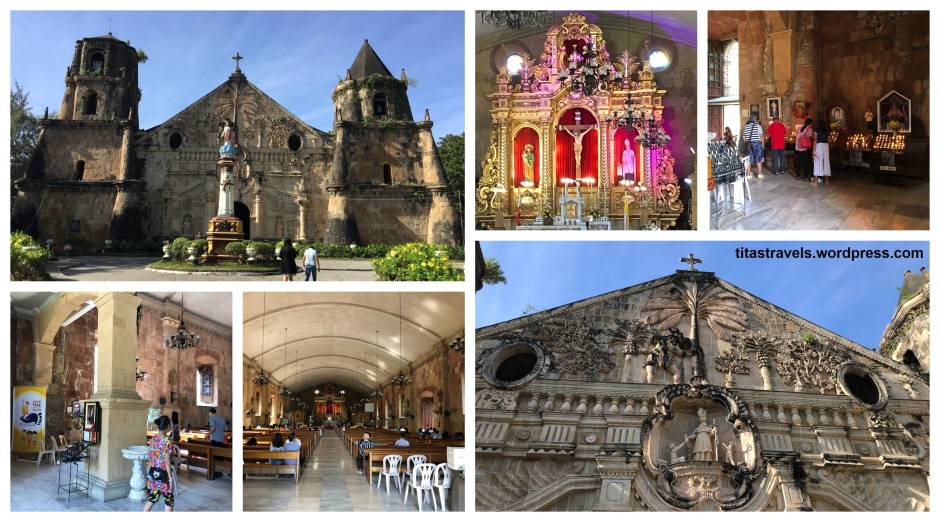
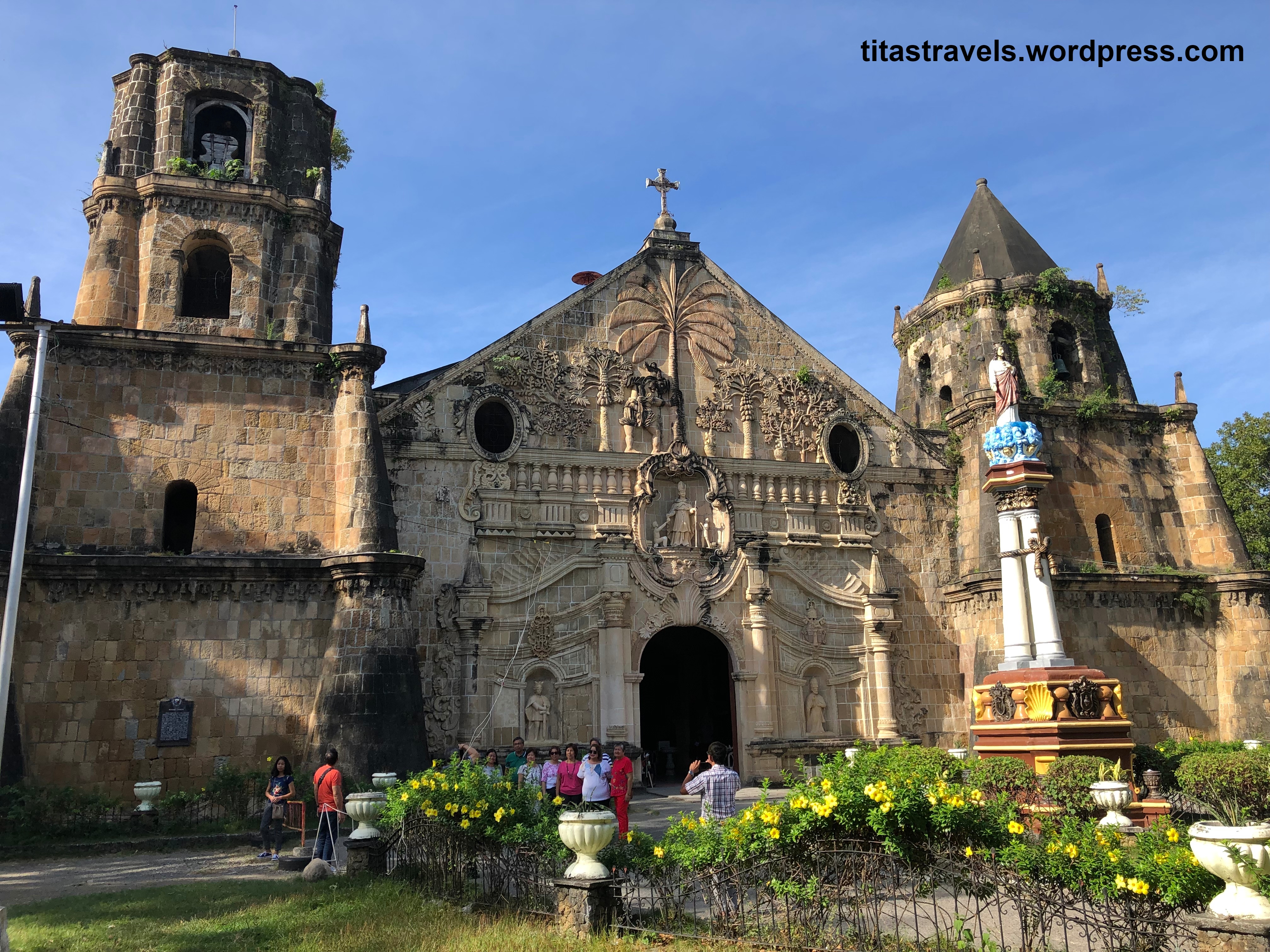



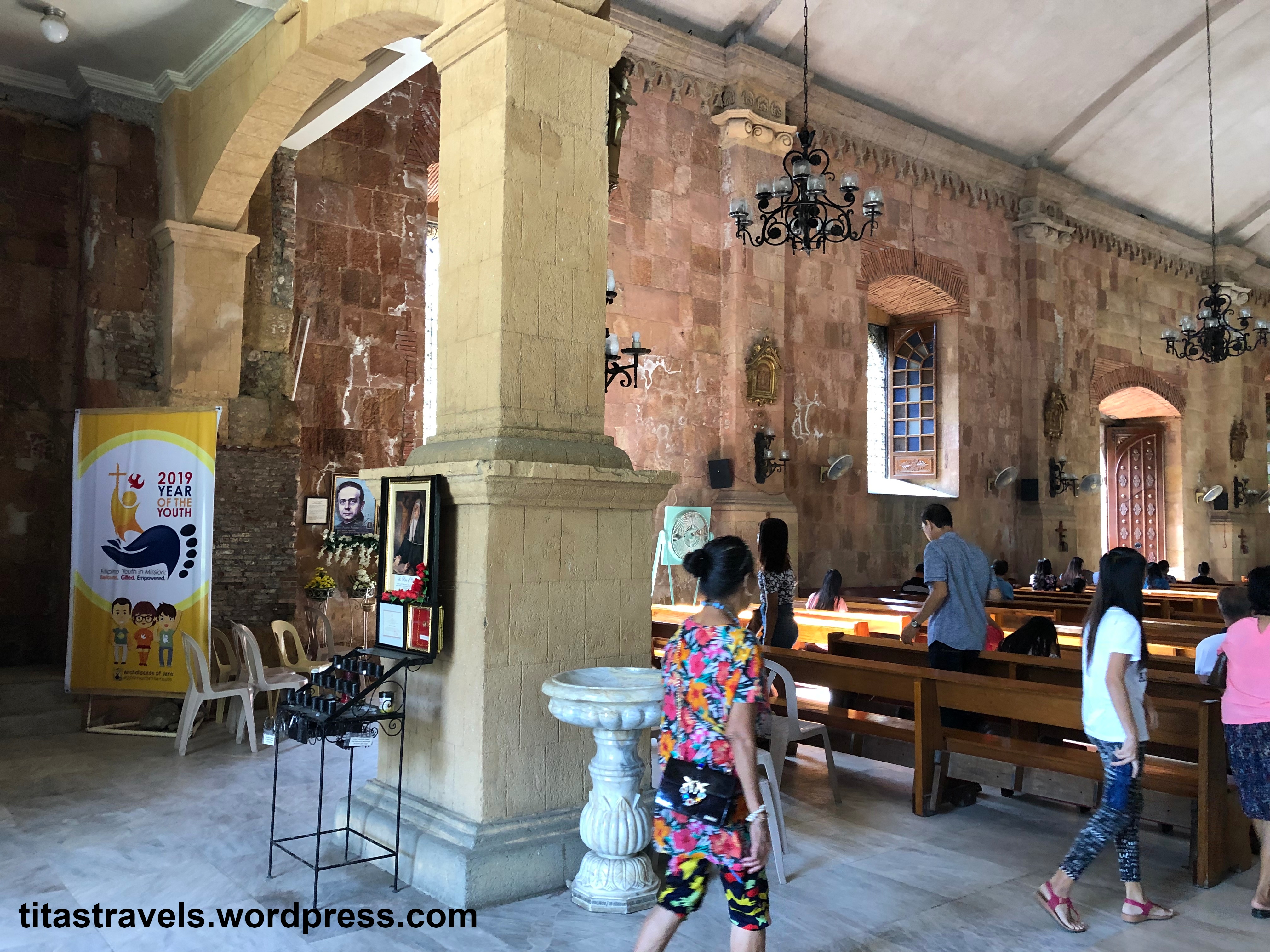



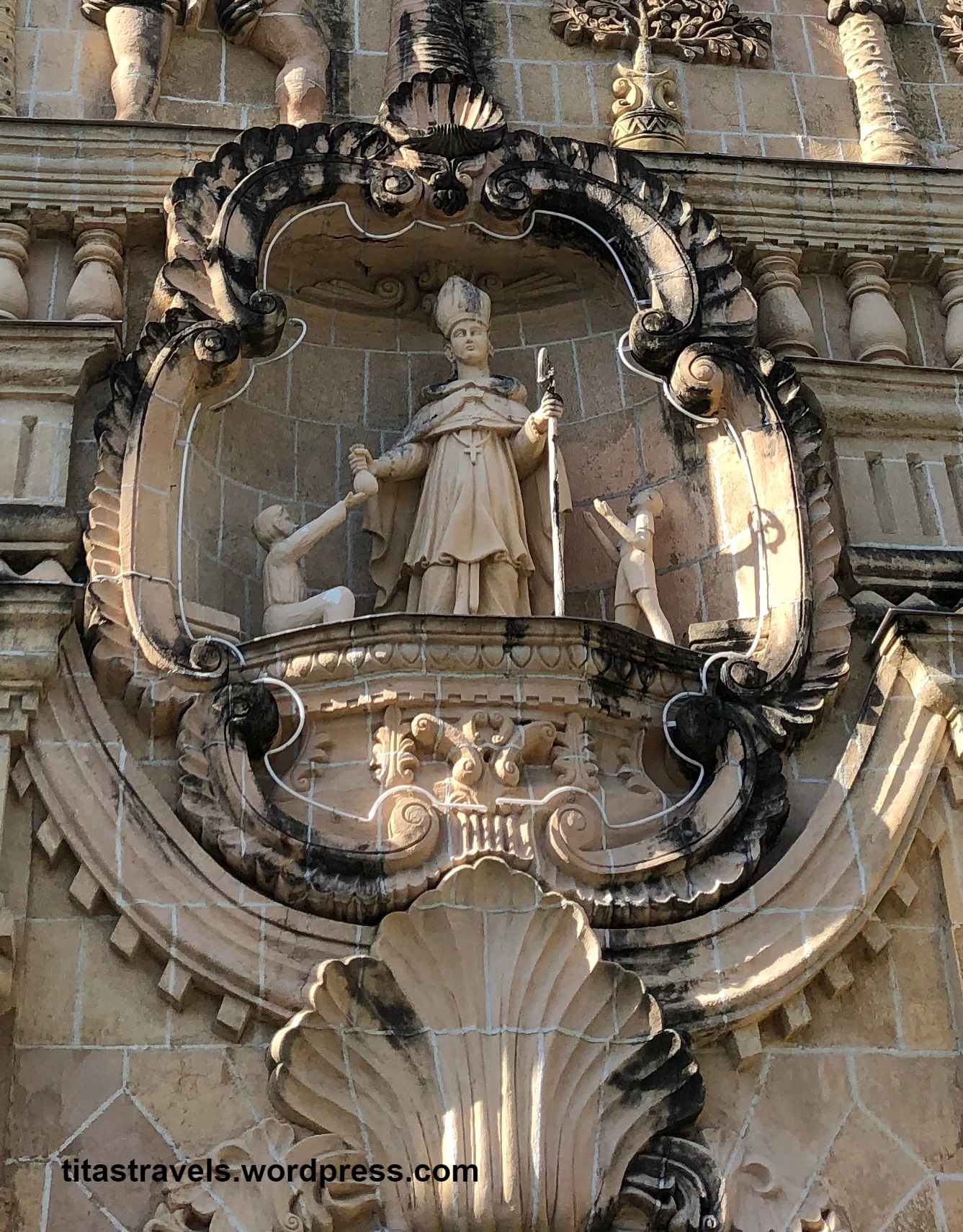



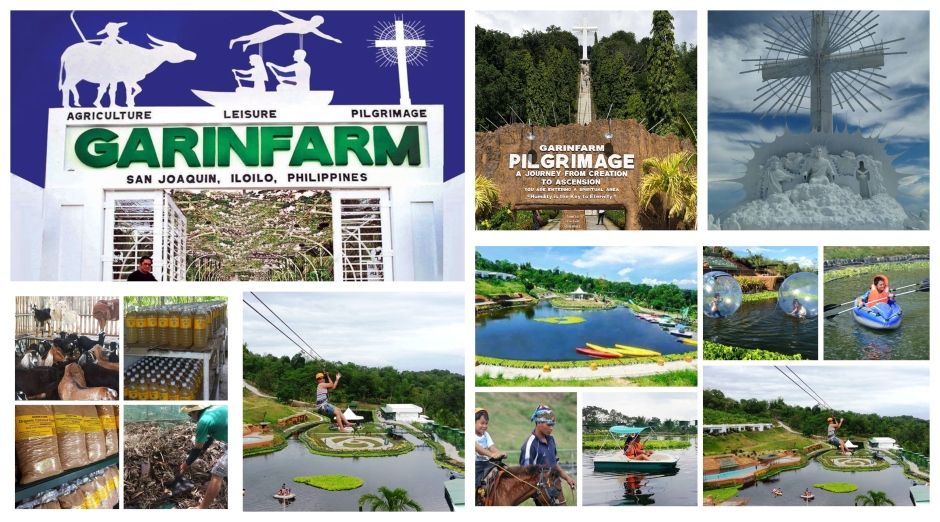
 Source: Official Facebook account, GarinFarm Pilgrimage Resort – profile picture:
Source: Official Facebook account, GarinFarm Pilgrimage Resort – profile picture: 
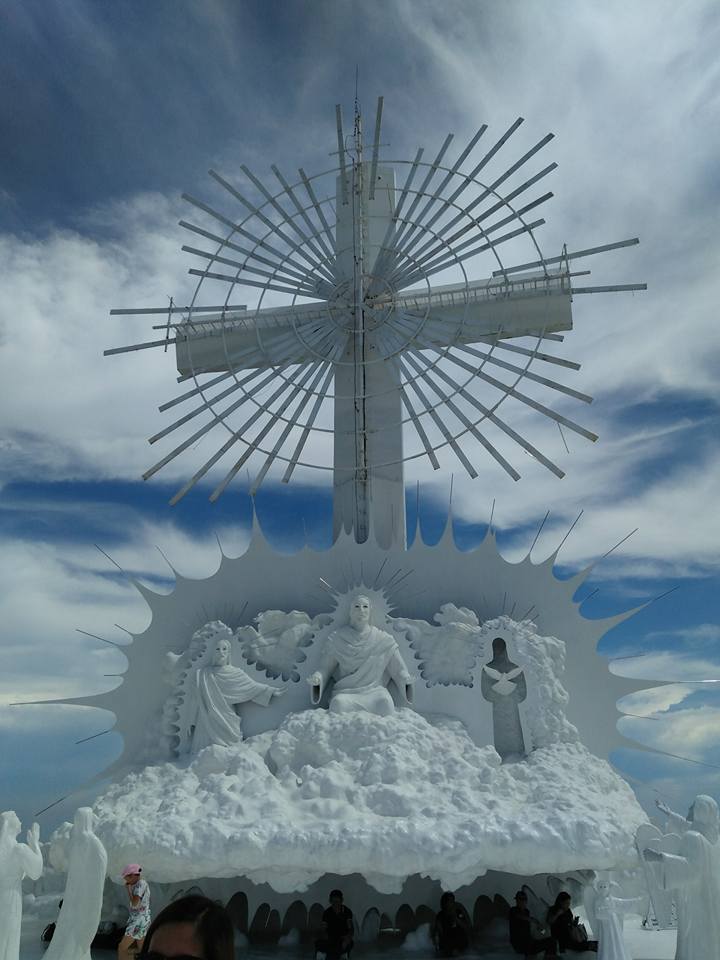 Photo Source: Official Facebook account, Garin Farm Pilgrimage Resort –
Photo Source: Official Facebook account, Garin Farm Pilgrimage Resort –  Photo source: Official Facebook account, Garin Farm Pilgrimage Resort –
Photo source: Official Facebook account, Garin Farm Pilgrimage Resort – 
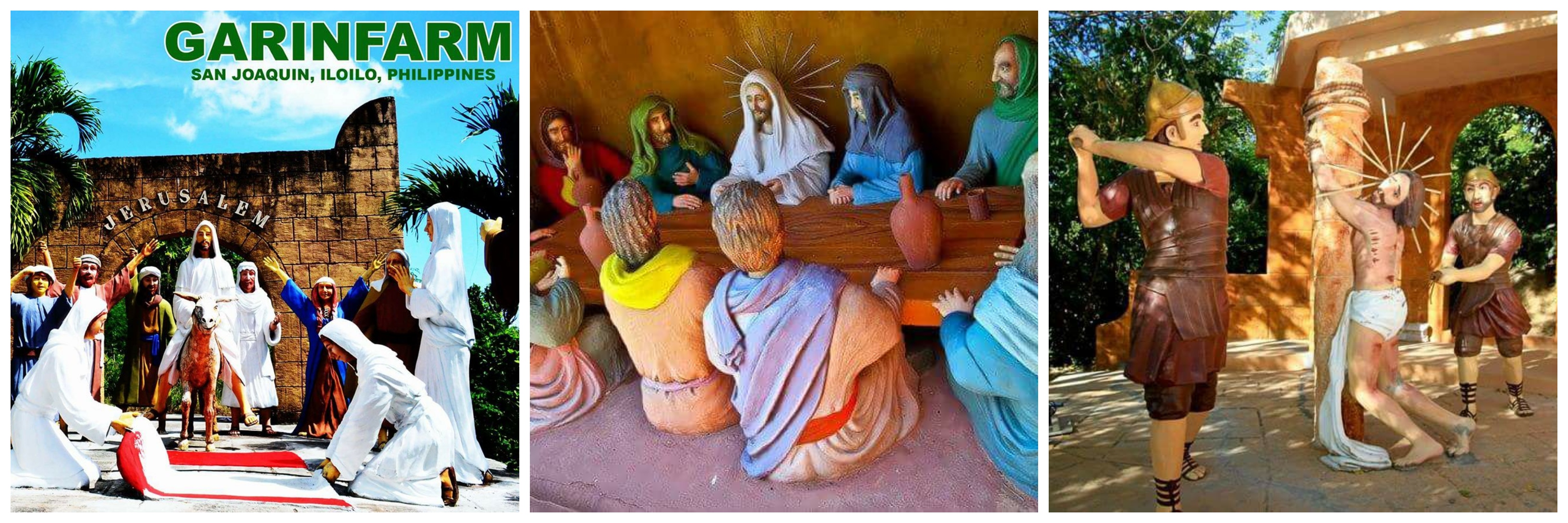
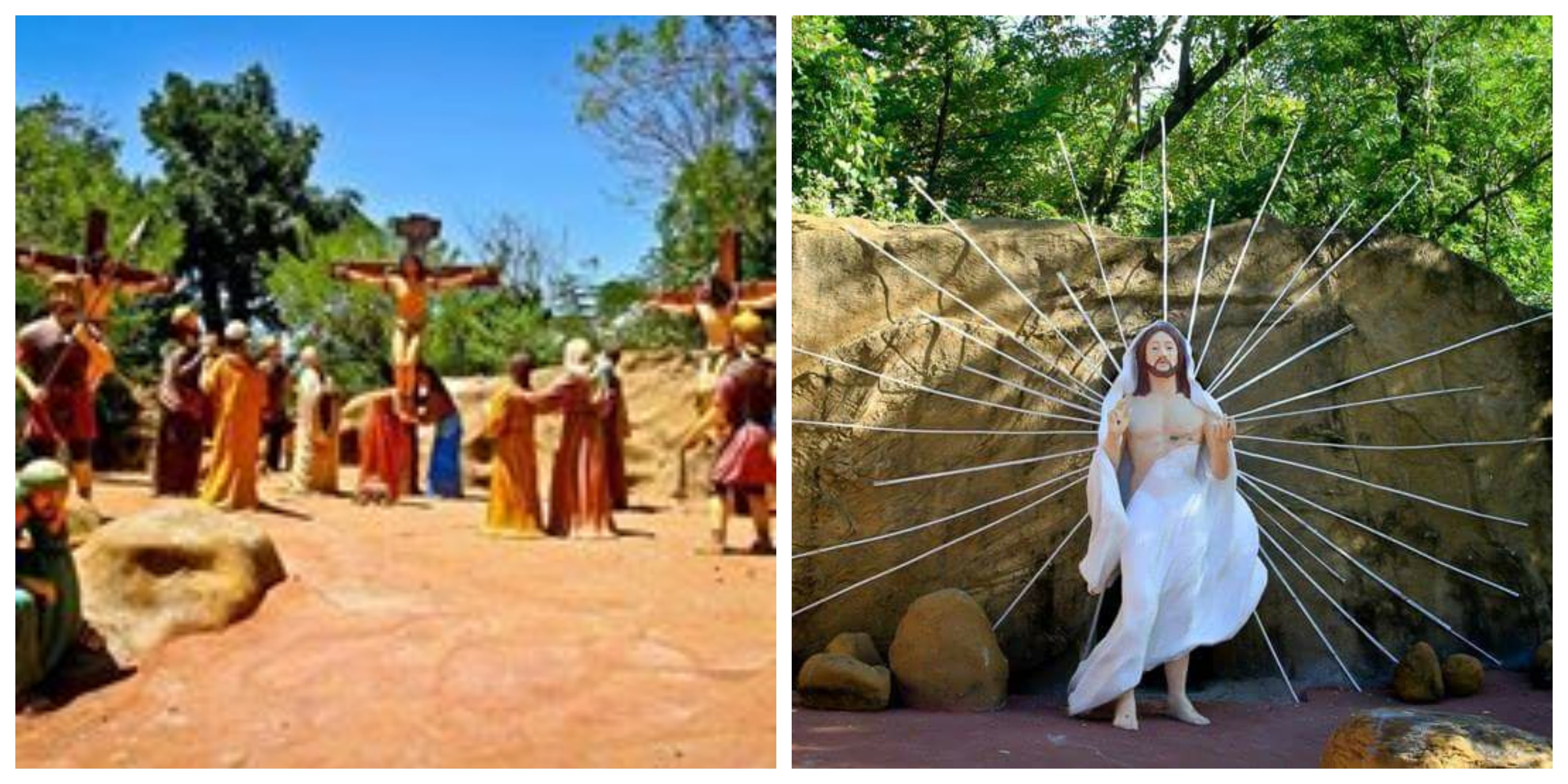
 Photo source: Official Facebook account, Garin Farm Pilgrimage Resort –
Photo source: Official Facebook account, Garin Farm Pilgrimage Resort –  Source of left photo: Official Facebook account, Garin Farm Pilgrimage Resort –
Source of left photo: Official Facebook account, Garin Farm Pilgrimage Resort – 


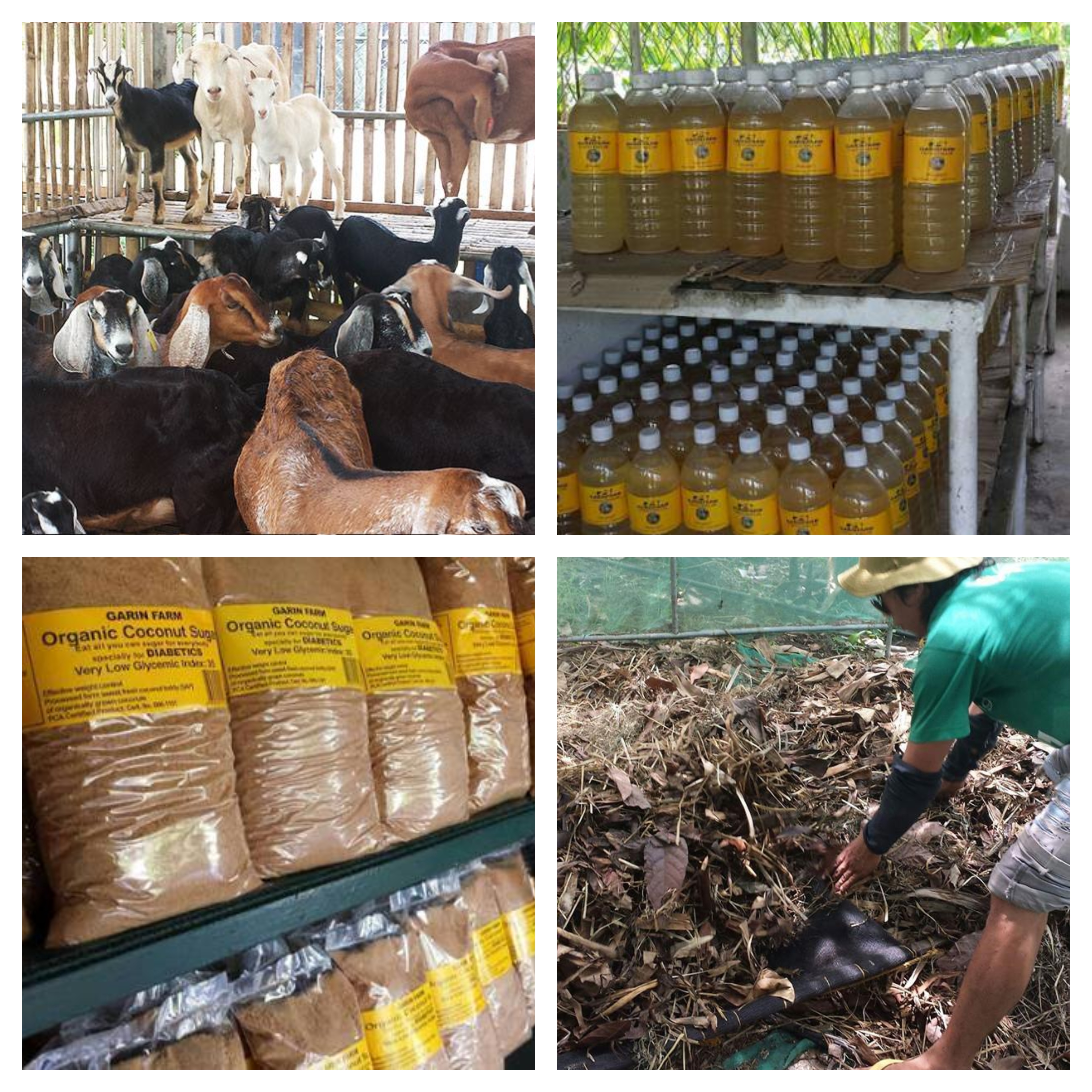



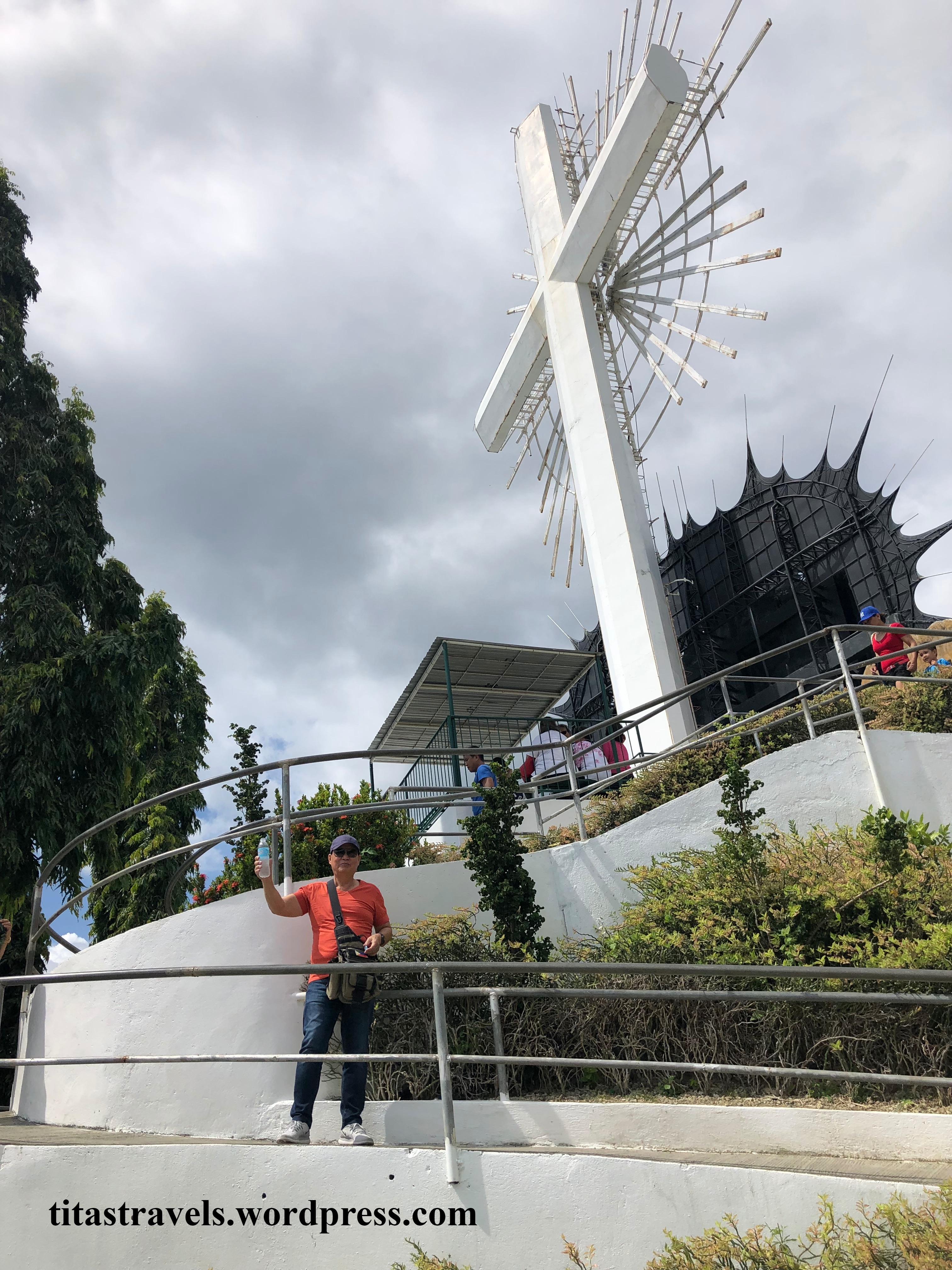
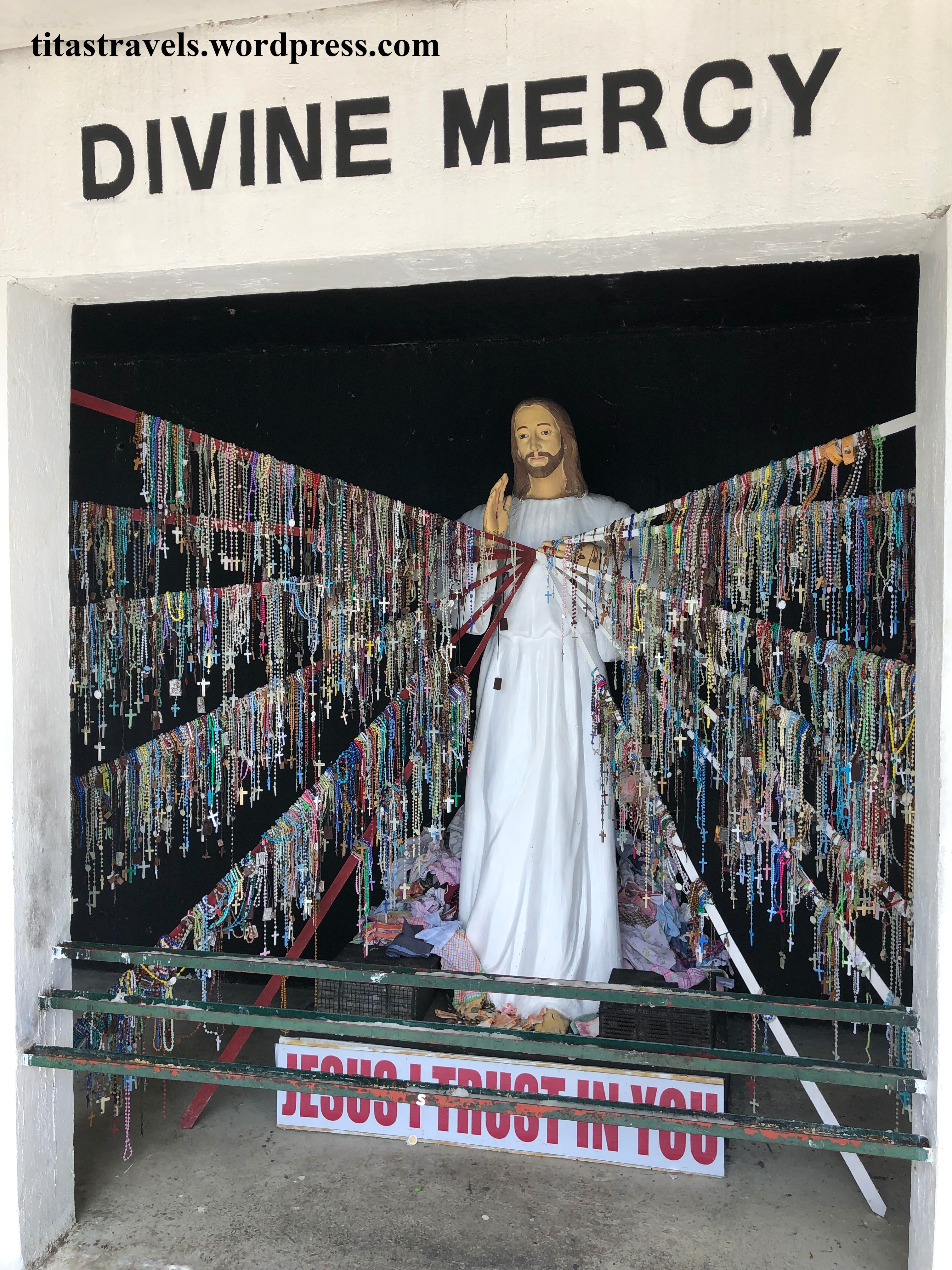




 The top of the entrance to the cave states that we are entering a spiritual area and that humility is the key to eternity. To remind us of this virtue, all of us had to stoop low to enter the structure, but easily stood straight upon entry.
The top of the entrance to the cave states that we are entering a spiritual area and that humility is the key to eternity. To remind us of this virtue, all of us had to stoop low to enter the structure, but easily stood straight upon entry.



 Photo source: Official Facebook account, GarinFarm Pilgrimage Resort –
Photo source: Official Facebook account, GarinFarm Pilgrimage Resort – 





